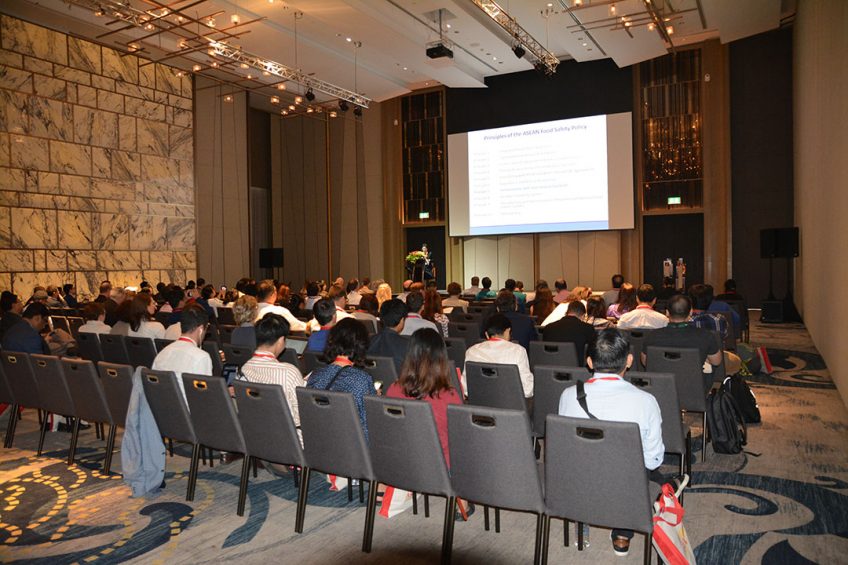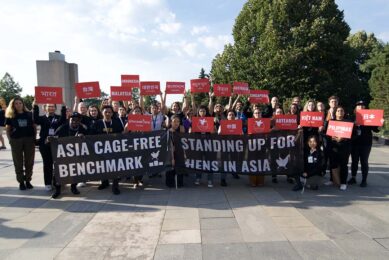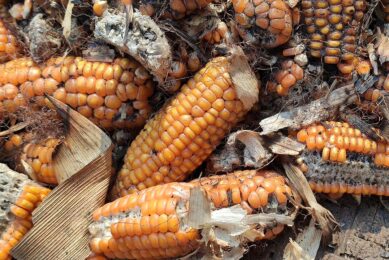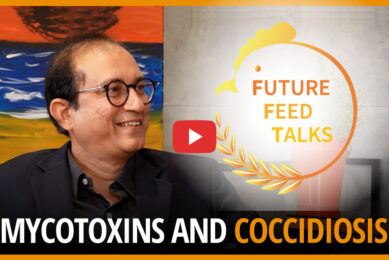WMF: Mycotoxins contaminate feed in Asia

Last month, the 12th World Mycotoxin Forum took place in Bangkok in Thailand. During the conference, researchers shared their knowledge and experience of the mycotoxin situation in Asia.
Despite efforts to prevent contamination with mycotoxins, Asian animal feed has been widely affected by mycotoxins in recent years (according to a a large-scale survey carried out by the Biomin Research Centre). “As many as 92% of the samples were contaminated with at least one mycotoxin and 88% were co-contaminated,” says Dr Gerd Schatzmayr of the research centre. The survey consisted of 24,455 samples from17 Asian countries from 2008-2019. The prevalence and co-contamination of mycotoxins varied between regions. In East Asia the mycotoxins DON, ZEN and FUM appear to be more prevalent, whereas in South Asia and Southeast Asia AFB1 plays an important role. Schatzmayr: “In South Asia and Southeast Asia 76.8% and 51% of the samples were positive for AFB1. Of greater concern is the fact that 40% of the South Asia samples and 20.6% of the Southeast Asia samples exceeded the EU maximum level for AFB1 in feed. AFB1 is a major risk for animal health in these regions.”
Impact on food safety and security
In addition to the risk of mycotoxins to animal health, the risk to human health and food security is perhaps even greater in Asia. According to Prof Naresh Magan of Cranfield University, UK, climate change will have a major impact on Asia’s food safety and security. “It’s expected that Asia will face changing temperatures, elevated CO2 levels and weather events such as extreme rainfall and droughts. These factors will influence the mycotoxin contamination of staple crops such as rice and maize. Contamination of such crops with mycotoxins will influence yield and nutritional quality. Since most of Asia is dependent on rice, food security will be threatened.”
Contamination of staple crops with mycotoxins will influence yield and nutritional quality. Since most of Asia is highly dependent on rice, food security will be threatened.” – Prof Naresh Magan of Cranfield University, UK
Carry-over effect
In aquaculture, there is also concern about human health: i.e., the mycotoxin carry-over effect. Since fishmeal will probably be increasingly replaced by plant meals in the near future, the risk of mycotoxin contamination of aquafeed may increase for certain species. Tropical species, in particular, have a very low depuration period, which may cause mycotoxins to remain in the digestive tract, including in the liver. Most of these small fish species are eaten as a whole by humans, thus risking the carry-over of mycotoxins. According to Dr Rui A. Gonçalves of Lucta, Spain, the negative impact of mycotoxins is often overlooked in aquafeed.

“There may be human health concerns (depending on species and production region), because of the carry-over effect to food. At the farm level the awareness of mycotoxin contamination is very low. Farmers simply don’t recognise the clinical signs. Sometimes, the animals seem perfectly healthy. However, there will be a huge reduction in growth performance as a result of mycotoxin intake. And, even when it is recognised, species that are more likely to eat plant-based meals are generally not very profitable and investment in feed additives is mostly not an option.” According to Dr Goncalves, mycotoxin management in aquaculture (contrary to livestock, where “one solution fits all”) needs to be looked at differently. Feed formulation differs between herbivorous, shrimps and carnivorous species, especially when novel proteins are used. This is why the mycotoxin risk will also differ between species.There is no specific mycotoxin legislation for aquaculture, with the exception of FB in EU. Dr Gonçalves argues that to determine mycotoxin regulatory limits, more research is needed on the effects of mycotoxins in aquaculture species and the carry-over effect to food should not be underestimated.
The use of mobile devices will open new ways of mycotoxin testing, analysing and mostly sharing of data.” – Ronald Niemeijer, R-Biopharm
Real-time testing
Testing of mycotoxins is also important. The lack of a standardised or validated sampling procedure seems to be a challenge and sampling protocols need to be standardised. Also, instead of testing large numbers of end-products for mycotoxin contamination, it would be more pro-active to test in real time at field level, according to Ronald Niemeijer, M.Sc., R-Biopharm AG, Germany. “The use of mobile devices will open up new ways of mycotoxin testing, analysing and sharing of data. Data can be available from everywhere in real time, which will help to create more precise predictive models. An easy-to-use, mobile tool will be essential.”
Mycotoxin Knowledge Centre: All you need to know about mycotoxins, from the regulations for mycotoxins to the impact on livestock health plus much more!
Mycotoxin Forum 2020: 5 take-awaysDuring the last day of the World Mycotoxin Forum Prof Rudolf Krska of BOKU University, Austria and Prof Chris Elliott of Queen’s University, Northern Ireland, both chairs of the conference, summarised the conference in a top five of takeaways:
Minimising mycotoxin contamination is not only about technology; behavioural changes & sustained efforts are needed on a daily basis. 5. Implementation of multi-mycotoxin monitoring programmes with product traceability across the supply chain is essential. |
 Beheer
Beheer








 WP Admin
WP Admin  Bewerk bericht
Bewerk bericht